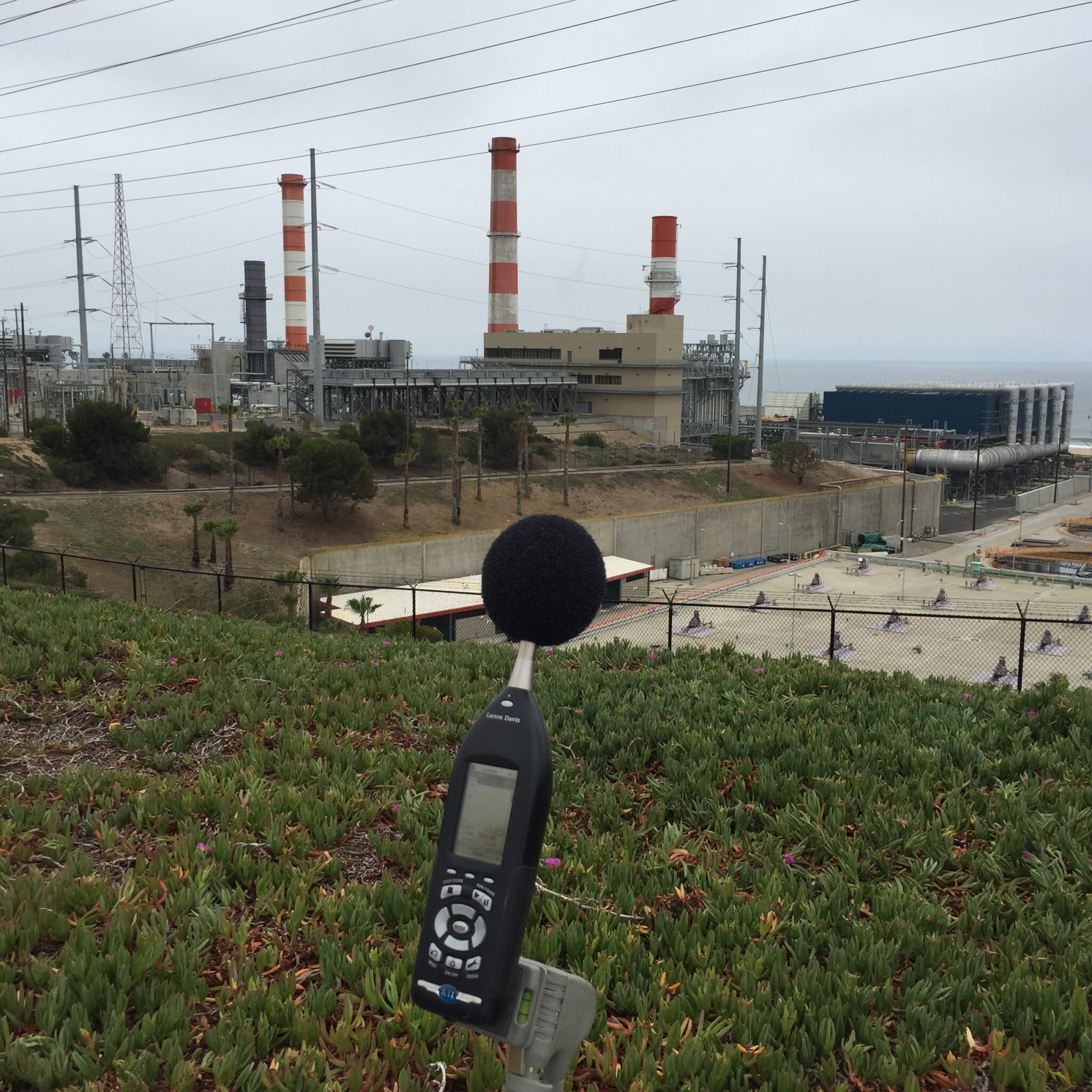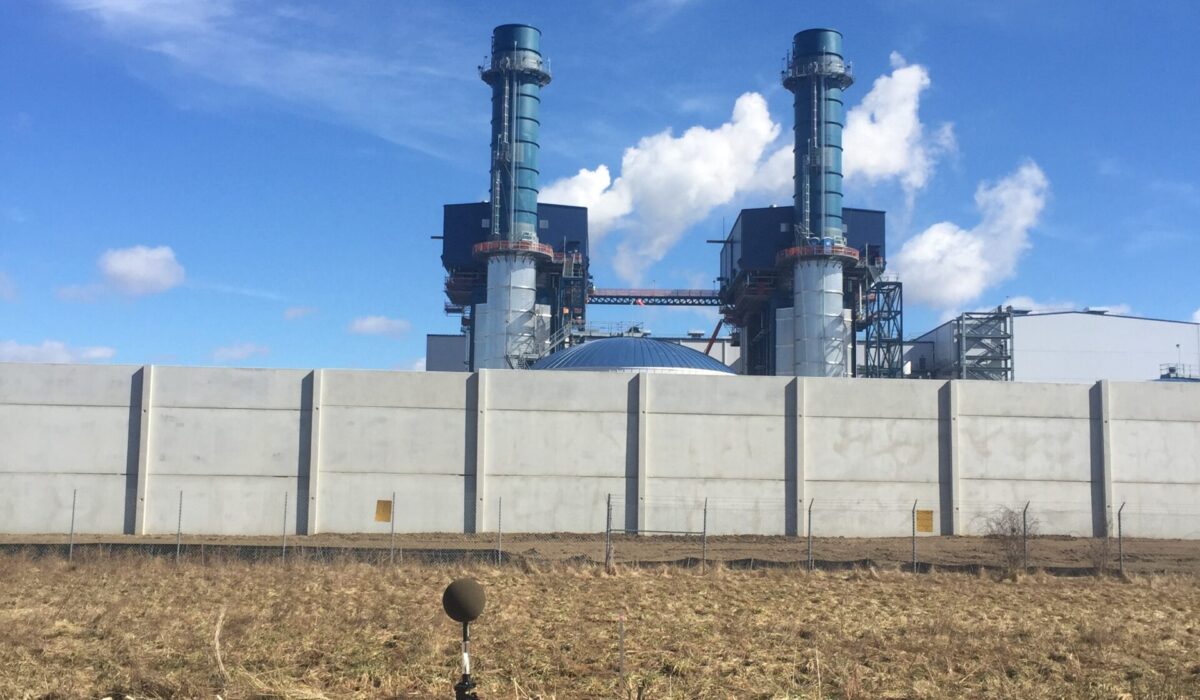Power Station Noise
General Information on Power Station Noise
Power stations, including those using gas and coal fueled turbines, as well as reciprocating internal combustion engines (RICE), generate noise from multiple sources. Cooling systems such as Air Cooled Condensers (ACC) and Cooling Towers are often the dominant noise source. While some would expect the exhaust stack noise to be the loudest source, they generally are not because they are well-understood and typically effectively mitigated. Other noise source concerns include that from the Combustion Turbine (CT) and Heat Recovery System Generator (HRSG) combustion turbine which radiates through their steel sheet enclosures. Specifically for RICE units, which operate large combustion engines fueled by natural gas or diesel, create low-frequency noise which can travel through typical building materials and also escape through the engine exhaust and intakes on the building. Mitigation for RICE facilities can be critical as these can be located nearer to residential areas to support peak load needs for electricity.

Power Station Noise
Equipment and Standards
To conduct an accurate noise survey, one must first start with the proper type of equipment, system, noise meter, etc. Noise monitoring equipment is rated by the American National Standards Institute (ANSI) as Type I or Type II. The different ratings relate to the accuracy of the equipment with Type I (laboratory grade) being more accurate than Type II (general purpose), but both can be suitable to conducting environmental noise surveys.
Calibration and Preparation
All equipment should be within about 12 to 24 months of their last factory calibration and be field calibrated prior to any testing. A general setup would include mounting the microphone on a tripod five-feet above the ground away from any reflective surfaces (i.e.: houses) and affixing a proper wind screen must be used.
Measurement and Reporting
Finally, setting up for logging the proper metrics is important, with the most critical one being that environmental noise is almost always measured in A-weighted (dBA) decibels and not flat-weighted (dB) decibels. Overall, it is generally best to request the assistance of a qualified noise consultant that cant conduct the test and write an easy to understand noise report.

Power Plant Noise
Companies facing power station noise issues should strongly consider engaging a third-party acoustical consultant. These experts offer an objective and specialized perspective, ensuring accurate assessments and effective mitigation strategies. Navigating complex noise regulations and developing tailored solutions requires in-depth knowledge and experience that internal teams may lack. A consultant provides:
- Independent analysis eliminates potential conflicts of interest and ensures accurate data.
- Consultants stay abreast of evolving noise regulations, minimizing legal and financial risks.
- Tailored mitigation strategies prevent unnecessary expenses and optimize noise control investments.
Frequently Asked Questions
Do Power Station owners care about the surrounding community
and environment?
For the projects that Cerjan Acoustics work on, the short answer is “Yes”. Power station owners strive to comply with regulations and be good neighbors. These facilities must gain approval from local and state regulations prior to any construction. A part of this approval process typically includes existing noise measurements, noise modeling, noise mitigation design, and a post construction noise assessment. Complaints at new stations often arise from temporary steam blowouts post-construction. Other loud noises are usually associated with infrequent “upset” conditions, such as safety valve or flare system activations.
Does foliage, such as trees, bushes, etc. mitigate noise from power plants?
Generally, no, but it can help. There are a variety of factors including depth (distance between source and receiver), density (varying heights from ground up), height (needs to break line of sight between source and receiver), species (leaves on is ok, but leaves off is not), and the location (close to source and/or receiver). But while foliage may not be the best at reducing the decibels, there is some benefit to blocking the site of the facility.
What is the best way to mitigate a power plant?
The best way is to treat the source of the noise such that no intermediate noise mitigation is needed. The trick to treating the source is to identify what will be the primary noise sources. Doing this comes from experienced acoustical consultants, equipment suppliers with accurate noise source data, and a solid engineering, procurement, and construction (EPC) contractor.
Why do they have to build a power plant so close to
residences?
That is going to be project dependent, but one must consider the location of existing transmission lines along with the predicted electrical demand for an area. This is why using an experienced acoustical consultant is important.
Full Member of the Acoustical Society of America
Full Member of the Institute of Noise Control Engineering


